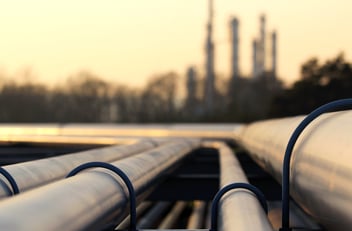The Required MAOP Test
The safety of pipeline operations in the United States is of utmost importance, and the PHMSA’s Mega Rule stands as a significant step forward in achieving this goal. Prompted by past pipeline accidents, including the tragic 2010 San Bruno explosion, this rule aims to improve safety standards across the industry. It introduces a range of measures such as enhanced integrity management programs, improved material verification, stricter repair criteria, and enhanced monitoring and communication between operators and the Pipeline and Hazardous Materials Safety Administration (PHMSA).
One crucial aspect of the integrity management program is the confirmation or reconfirmation of a pipeline's maximum allowable operating pressure (MAOP). To establish the integrity, pipeline operators are required to conduct a hydrostatic test or employ other approved methods to obtain the pressure by dividing the test pressure by a factor of 1.5 or by a factor determined in accordance to the table below, as specified in section 192.619(a)(2)(ii):

Hydrostatic Test Medium Requires Proper Disposal
In the oil and gas industry, preparing for the hydrostatic test involves emptying operational pipelines and removing any build-ups or sediments. Depending on what the pipeline carries, some processes will involve surfactants. Additionally, other midstream chemicals used may include scavengers, inhibitors, biocides, etc. When the early stage of preparation is complete, the collection of liquid waste stream must be properly disposed of. Another set of liquid waste streams that require proper disposal include the used test medium. Disposal of these waste streams is governed by the Clean Water Act and is the Environmental Protection Agency (EPA) who manages the permitting program, i.e., National Pollutant Discharge Elimination System (NPDES). The CWA is specific about the disposal of these streams:
- Section 301(a): This provision prohibits the discharge of any pollutant into navigable waters unless specific requirements are met, such as obtaining NPDES permit.
- Section 307(a): The discharge of oil and hazardous substances into navigable waters is strictly prohibited.
- Section 402: Operators of certain facilities, including pipelines, must acquire an EPA permit before discharging any pollutants into navigable waters (NPDES permit).
The CWA requirements aim to safeguard the nation's waters from potential environmental impacts caused by pipeline leaks. They ensure that pipeline operators take proactive measures to minimize leak risks and mitigate any impacts that may arise. Aside from the CWA requirements, operators must also consider state and local regulations that may apply to MAOP testing of pipelines and its waste stream management. It is essential to fully understand these regulations to ensure compliance with all relevant requirements.
Here are a few additional points to consider regarding the CWA requirements for MAOP testing of pipelines:
- The CWA requirements apply to both new and existing pipelines.
- These requirements are applicable to all pipelines involved in the transportation of oil or hazardous substances.
- The specific requirements may vary depending on the pipeline's type and location.
- Depending on the waste pollutants, NPDES permits are required. The following is a map showing where NPDES has full, partial, or no authority [here]. Always check in with your local municipality and environmental agencies for details.
- The EPA has established exemptions from the CWA requirements for MAOP testing of pipelines, although the exemptions are not automatic, subject to conditions, and may even be revoked.
Compliance with the Clean Water Act requirements, along with state and local regulations, is paramount for pipeline operators. Thoroughly reviewing these obligations is crucial to ensure adherence to compliance. PHMSA also maintains a repository of enforcement activities [here]. For the past 40 years, we have been supporting our customers in navigating these requirements, effectively managing their waste streams. Today, we have established strategically centralized wastewater treatment facilities across the country to further this endeavor. This enables us to swiftly profile our customers' waste streams and determine the optimal and compliant course of action. Our expertise extends to handling waste streams that necessitate an RCRA Part B permit.
By leveraging our capabilities, we successfully mitigate the potential bottlenecks that waste streams can create for our customers. This empowers them to focus on what they excel at: production. Valicor’s waste stream management helps our customers streamline their waste management processes, ensure compliance, and maximize efficiency in their operations.


